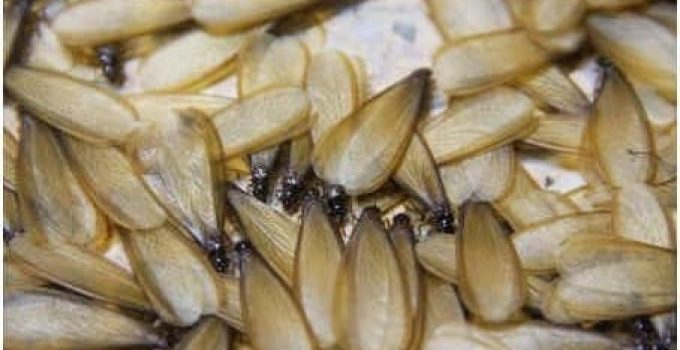Every termite colony begins with a single pair of winged reproductives—often unnoticed by homeowners. These swarming termites, called alates, take flight, find a mate, and settle in a dark, moist location to start a new colony. Though tiny, this founding pair can eventually give rise to hundreds of thousands of destructive offspring. Understanding how termite colonies form is key to catching infestations early—and stopping them before they grow.
Dive Deeper
- The Role of Swarming in Colony Formation
- Pairing and Nest Establishment
- Development of Castes
- Colony Growth Timeline
- Table: Phases of Termite Colony Development
- 🎯 Final Thoughts
- 📚 References
The Role of Swarming in Colony Formation
Termite colonies begin during swarms, when alates—winged male and female reproductives—emerge from mature colonies. These swarms occur under specific conditions:
- Warm temperatures (above 70°F)
- High humidity or after rainfall
- Often during spring or early fall, depending on the species
💡 According to the University of Kentucky Entomology Department, swarming is a key sign of a nearby mature colony and one of the few times termites are visible above ground [1].
Pairing and Nest Establishment
After landing, the alates:
- Shed their wings, signaling their readiness to mate
- Pair up—one male, one female
- Search for a dark, moist, and enclosed site such as:
- Cracks in foundations
- Decaying logs
- Soil near structures
Once sheltered, they mate, and the female becomes the queen, laying her first eggs.
🧬 Only about 1 in 1,000 alates survives to form a successful colony—most are eaten by predators or perish from exposure [2].
Development of Castes
After the eggs hatch, the tiny nymphs begin forming the three major castes:
- Workers: Care for the queen, forage, and build tunnels
- Soldiers: Develop strong jaws or heads to defend the nest
- Reproductives: Some nymphs mature into alates for future swarms
The queen controls caste differentiation using pheromones and egg-laying rates to balance the colony’s needs [3].
🐜 Colonies start small—with just a few dozen termites—but may reach over 1 million individuals in 5–10 years depending on species [4].
Colony Growth Timeline
- Weeks 1–2: First eggs hatch
- Months 1–6: Workers and soldiers begin basic tunneling
- Year 1–2: Queen’s egg-laying rate increases
- Years 3–5: Structural damage may begin as foraging tunnels expand
- Years 5+: Colony becomes large enough to produce its own swarmers
📈 According to research in the Journal of Economic Entomology, subterranean termite colonies reach detectable size in 3–5 years, but significant damage can occur earlier [5].
Table: Phases of Termite Colony Development
| Phase | Time Frame | Key Events |
|---|---|---|
| Mating & Pairing | Day 1 | Winged termites shed wings, find mate |
| Nest Founding | Week 1 | Begin burrowing into soil or wood |
| First Brood | Weeks 2–4 | Eggs hatch into initial workers |
| Worker Expansion | Months 2–12 | Tunnels spread, food gathering begins |
| Soldier Development | Months 6–18 | Defense caste appears |
| Colony Growth Phase | Years 2–5 | Population increases rapidly |
| Reproductive Phase | Year 5+ | New alates produced to form future colonies |
🎯 Final Thoughts
So, how do termite colonies start? A single pair of alates escapes a mature colony, mates, and hides away to start anew. Though fragile at first, given time and the right conditions, they can create massive colonies capable of severe structural damage.
Key takeaways:
- Swarms = New colonies forming
- Pairing happens quickly after landing
- Early detection is essential, since colonies remain hidden for years
If you see swarming termites indoors, it likely means a colony already exists within or near your home—and it’s time to act.
📚 References
- Potter, M. F. “Termite Control.” University of Kentucky Entomology Department, 2023.
https://entomology.ca.uky.edu/ef604 - Su, N.-Y., & Scheffrahn, R. H. “Flight and Colony Establishment in Termites.” Annual Review of Entomology, vol. 41, 1996.
https://doi.org/10.1146/annurev.en.41.010196.001055 - Nalepa, C. A. “The Role of Pheromones in Termite Caste Differentiation.” Insectes Sociaux, vol. 57, 2010.
https://doi.org/10.1007/s00040-010-0087-y - Krishna, K., & Weesner, F. M. Biology of Termites. Academic Press, 1969.
https://www.worldcat.org/title/biological-termite/oclc/298768 - Grace, J. K., & Su, N.-Y. “Detection and Evaluation of Termite Infestations.” Journal of Economic Entomology, vol. 82, no. 4, 1989.
https://doi.org/10.1093/jee/82.4.1189
